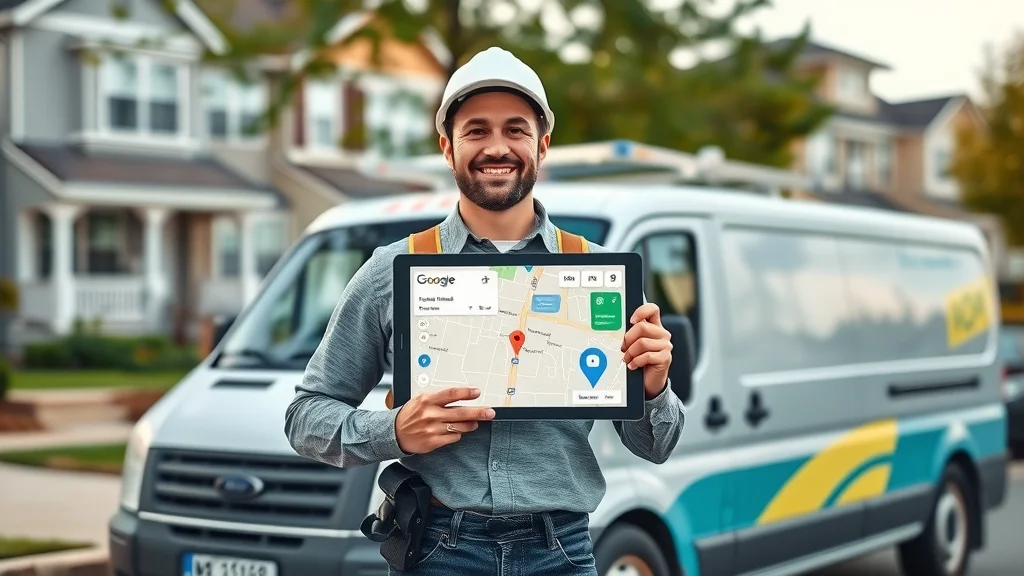Did you know that a single, well-optimized Google Ads campaign can generate over $50,000 in new business for a roofing company? In this comprehensive case study, we’ll take you behind the scenes of a real roofer google ads case where a strategic digital approach turned one ad campaign into a lead-generating powerhouse. If you’ve ever wondered how digital advertising could transform your roofing business, this article delivers the blueprint — complete with actionable insights, expert tips, and the proven steps that can help you dominate your local search results and grow your revenue.
A Surprising Truth: The Untapped Power of Roofer Google Ads Case in Lead Generation
"Many roofing companies overlook the immense value in targeted google ads, missing out on high-converting roofing leads." — Industry Expert
Google Ads remains one of the most potent, yet underused, lead-generation tools for roofing companies. In the crowded roofing market, roofer google ads case studies consistently reveal that targeted digital strategies outperform traditional marketing, especially when ad campaigns are structured to deliver quality roofing leads. The platform’s ability to target homeowners at the decision-making stage ensures every dollar spent reaches potential clients in your service area. This case uncovering $50,000 in new revenue is not an outlier — it’s a repeatable outcome when you harness Google Ads for roofers with precision.
Roofing businesses that rely on referrals and organic search may find themselves missing out on valuable and immediate roofing leads. When Google Ads are tailored with specific ad groups—like roof replacement, metal roof, or emergency repairs—the difference is immediate: higher conversion rates, reduced cost per lead, and rapid results. If your digital marketing mix doesn’t include a strategic Google Ads campaign, you could be handing your competitors a significant advantage this season.

What You’ll Learn From This Roofer Google Ads Case Study
How roofer google ads case campaigns work for roofing businesses
Critical ad groups and text ad strategies for roofing leads
How to optimize landing page conversions
Understanding cost per lead and maximizing ROI from google ads for roofers
By the end of this article, you’ll have a step-by-step understanding of how a highly targeted Google ad campaign drove real leads and revenue, equipped with practical advice you can apply to your own roofing business.
Background: The Roofing Company’s Challenge and Goals in This Roofer Google Ads Case
This roofer google ads case begins with a well-established local roofing company facing stiff competition and inconsistent lead flow. Despite years in the business, traditional advertising and word-of-mouth referrals were no longer enough. Seeking steady roofing leads and improved cost per lead, the company aimed to modernize its marketing with a focused digital approach. The core challenges were clear: boost the volume of quality roofing leads, outcompete rival roofing companies on search results, and accurately track ad spend for clear ROI.
The main goals were to test ads for roofers through Google Ads, target homeowners seeking roof replacement, metal roof options, or emergency roof repairs, and funnel them into a conversion-oriented landing page. Ultimately, the company needed to find a sustainable ad group strategy that delivered high-quality leads without blowing past their maximum cost targets. This set the stage for a data-driven campaign, where each ad group was closely tracked not just for clicks—but for real, measurable roofing lead conversions.
Strategy Overview: Structuring Ads for Roofers and Google Ads for Roofers
Success in Google Ads for roofers depends on tightly organized ad groups and clear messaging. This roofer google ads case crafted an ads campaign with dedicated ad groups for high-intent searches: roof replacement, metal roof installations, and emergency roof repairs. Each ad group was paired with unique text ads and a tailored keyword list, ensuring relevancy and strong click-through rates.
Budget allocation was equally strategic. Instead of spreading spend thin, the company allocated higher budgets to ad groups proven to generate the best roofing leads based on search intent and conversion rate. This allowed higher visibility for money-making keywords, while a negative keyword list helped filter out irrelevant traffic, ensuring maximum cost control. Regular review of search terms and continuous refinement of ad copy meant that only the best-performing ads for roofers received investment.
Top ad groups used in this roofer google ads case: roof replacement, metal roof, emergency repairs
Google ad budget allocations and rationale for maximum cost

The Ad Group Breakdown: Reaching Quality Roofing Leads
Ad group segmentation was at the heart of this successful roofer google ads case. By dividing campaigns into specific service lines, the company could test performance, optimize keywords, and allocate budget where it produced the most quality leads. Here’s a breakdown of how each main ad group performed in terms of cost per lead and conversion rate:
Ad Group |
Cost Per Lead |
Conversion Rate |
|---|---|---|
Roof Replacement |
$45 |
8% |
Metal Roof |
$60 |
7% |
Emergency Repairs |
$50 |
9% |
The roof replacement ad group delivered the lowest cost per lead, while emergency repair ads achieved the highest conversion rate — both critical metrics for scaling up google ads for roofers. Segmented ad groups also made tracking ROI and maximizing each dollar easier, as underperforming groups could be quickly adjusted or replaced, ensuring ongoing campaign health and stronger lead quality over time.
Landing Page Optimization: Converting Clicks to Roofing Leads
A well-crafted landing page is essential to take potential roofing leads from a click to a conversion. In this roofer google ads case, landing pages were uniquely designed for each ad group, reflecting the specific service homeowners searched for—roof replacement, metal roof installation, or emergency repairs. Speed, trust, and usability remained the focus to ensure anyone from desktop or mobile could contact the roofing company instantly.
Fast load times
Clear roofing company branding
Trust signals and testimonials
Easy-to-use contact forms
Mobile responsiveness
Elements like customer testimonials, strong branding, and transparent phone call buttons increased the conversion rate. A/B testing of forms, CTA (call-to-action) placement, and ongoing heatmap analysis allowed for iterative improvements. These tailored landing pages not only supported higher conversion rates but also improved Google Quality Score, which ultimately lowered the cost per lead and maximized the return from ads for roofers.

Writing Text Ads for Roofers: Messaging That Boosts Roofing Leads
Crafting compelling text ad copy is one of the most overlooked ways to boost roofing leads. Each ad group in this roofer google ads case used unique messaging that addressed homeowners’ pain points — from emergency leaks to the desire for a long-lasting metal roof. Including keywords naturally in the headline and description improved click-through rates and ensured ads were relevant for both Google and the searcher.
Best practices for writing high-converting google ads
SEO tips for integrating roofing leads keywords into text ads
Best practices involve using direct calls to action, highlighting urgent benefits (“24/7 Emergency Roof Repair: Book Now!”), and integrating target keywords such as “roof replacement” and “metal roof installation.” Consistent testing of text ads, coupled with rotating offers and transparent pricing, provided data on which headlines and phrases produced the most quality leads. Clear, benefit-focused ad copy lifted engagement and ensured that every ad dollar contributed directly to the roofing business’s bottom line.
The Results: $50,000 in Roofing Leads From a Single Roofer Google Ads Case Campaign
Perhaps the most compelling section of this roofer google ads case is the quantifiable impact. After only a few months of targeted Google Ads for roofers, the company saw the following results:
Key Metric |
Value |
|---|---|
Impressions |
15,000 |
Clicks |
1,600 |
Leads Generated |
110 |
Cost per Lead |
$53 |
Total Revenue |
$50,000 |
A combination of high-quality traffic from well-segmented ad groups, optimized landing pages, and sharp text ads meant that each lead had a strong chance of converting into a paying roofing job. For the client, this single campaign represented a direct return on investment many times over and delivered a pipeline of profitable roofing business that extended beyond the campaign’s end date.

In this interview, a digital marketing expert provides a step-by-step walkthrough of the roofer google ads case, sharing insights on campaign setup, bid strategies, ad group structuring, negative keyword selection, and ongoing performance tracking. Watch for actionable tips you can apply even if you’re just getting started with Google ads for roofers.
Adjusting Maximum Cost and Cost per Lead for Ongoing Google Ads Success
Effective Google Ads management for roofers means regularly reviewing and adjusting your maximum cost bidding strategy. This roofer google ads case focused on keeping the cost per lead within target ranges. By analyzing each ad group’s conversion rate and lead quality, the company allowed for flexible budget reallocation: shifting spend to ad groups where ROI was highest and pausing or adjusting bids where costs crept up.
Bid adjustments, negative keyword expansion, and daily monitoring made it possible to maintain a healthy lead flow without exceeding campaign budgets. For example, the company used a keyword planner to test new terms and reviewed search term reports to remove costly, non-converting queries. This ongoing optimization was crucial to staying competitive in local search results and maintaining a sustainable pipeline of roofing leads.

Scaling Up: Leveraging Google Ads for Roofers Growth
Once a profitable baseline was reached, the roofing company expanded its google ads for roofers strategy. This included broadening ad groups to target surrounding zip codes, increasing the budget for top-performing services, and layering in remarketing to reach homeowners who previously interacted with ads or landing pages.
Over time, scaling up meant reviewing new keyword opportunities using Google’s keyword planner, launching fresh text ads for seasonal promotions (like hail storm repairs or energy-efficient metal roof upgrades), and monitoring performance metrics with increasing granularity. This roofer google ads case illustrates how deliberate, stepwise scaling—rather than a broad, unfocused spend—produces the highest ROI and sets roofing companies up for sustained, compounding growth.
Common Pitfalls: What Roofing Companies Should Avoid in Google Ads
Ignoring ad groups and text ad segmentation
Overlooking mobile landing pages
Underestimating maximum cost settings
Many roofing companies make the mistake of running a generic ad campaign without segmenting ad groups or customizing text ads. Others direct Google Ads traffic to slow, cluttered, or non-mobile-friendly landing pages—drastically lowering conversion rates. And some ignore maximum cost rules, quickly running up ad spend without sufficient returns. Avoiding these pitfalls by following proven best practices from this roofer google ads case ensures your ads for roofers are both efficient and profitable.

Roofing Leads Quality: How to Vet and Convert Prospects in Roofer Google Ads Case
Not all roofing leads are created equal. This case study shows that a system for promptly vetting leads—involving quick phone calls, lead scoring based on service interest, and conversion tracking—is essential. The company’s sales process included swift follow-up within minutes of a new inquiry, ensuring prospects remembered the ad and their needs.
Each landing page included qualifying questions to filter out non-serious submissions, while CRM integration tracked which ad group and keyword led to a closed sale. By continually refining the criteria and follow-up strategy, the company could improve quote-to-sale ratios, ultimately making the most out of each roofing lead delivered by Google Ads.
Hear directly from the roofer whose business was transformed by this Google Ads case. In their own words, you’ll gain fresh perspective on the tangible difference high-quality leads made to their bottom line and future growth plans.
People Also Ask: Insights From the Roofer Google Ads Case
Is $20 a day good for Google ads?
A $20 daily budget can be effective for a roofer google ads case, especially in smaller markets or when campaigns are focused on just one or two high-value ad groups like roof replacement or emergency repairs. However, larger, more competitive areas might require increased spend to achieve meaningful impressions and leads. It’s essential to monitor your cost per lead and adjust your budget upward as needed for growth, always keeping an eye on ROI.
Can a roofer sue you if they fall off your roof?
This depends on your location and the roofer’s insurance coverage. Reputable roofing companies carry workers’ compensation and liability insurance, which protects both parties. Homeowners should always verify coverage before work begins. It’s not directly related to your advertisements, but clear communication about safety policies can boost trust on your landing pages, improving the conversion rate for roofing leads.
Is offering free roof inspections soliciting?
Offering free roof inspections as part of your ad campaign is standard practice and not considered soliciting as long as outreach complies with local regulations. Highlighting this service in text ads or landing pages helps boost roofing lead conversions, particularly when paired with a strong call to action. Ensure your offer is genuine and clearly explained to avoid misunderstandings.
How much for 1000 impressions on Google?
The cost for 1,000 impressions (CPM) on Google Ads varies by market competitiveness and ad group targeting. For roofers, CPM can range from $5 to $20 depending on keywords like “metal roof” or “roof repair.” However, most companies focus on cost per lead rather than CPM, since real value comes from paying for actual roofing leads rather than just visibility.
FAQ: Roofer Google Ads Case Key Questions Answered
How long does it take to see results from google ads for roofers campaigns?
Most roofing companies see initial roofing leads within 3–7 days of launching a properly structured google ads campaign. Full optimization and peak ROI usually emerge after 30–60 days of data collection, split-testing, and ongoing adjustments to ad groups and text ads.What landing page tools are most effective for roofing leads?
Popular tools like Unbounce, Instapage, and Leadpages allow quick customization, mobile optimization, and fast load times, which are essential for converting clicks into qualified roofing leads. Integration with CRM systems also aids in tracking conversions from each ad group.How do you track cost per lead and ROI precisely for roofing companies?
Google Ads' built-in conversion tracking, call tracking numbers, and Google Analytics setup provide real-time data on cost per lead. For the best results, use UTM parameters and regular lead follow-up to ensure each contact is attributed properly to the right campaign or ad group.Should roofing businesses use local or national ad group targeting?
For most, local targeting yields higher quality leads at a lower cost per lead. National campaigns can dilute budget and often attract less relevant traffic. Start with geo-targeted ad groups and expand only once you’ve maximized results in your home market.
Key Takeaways: Lessons From the Roofer Google Ads Case
Effective ad groups and landing page design are crucial for converting roofing leads
Continuous testing of text ad and keyword strategies boosts ROI
The roofer google ads case demonstrates scalable growth for modern roofing companies
Final Thoughts: Maximizing Profits With Google Ads for Roofers
Embrace proven digital strategies and you can transform your roofing business, driving high-value leads and real revenue through every Google Ads campaign.
Next Steps: Book a Free Consultation or text Us 720.892.5968
Ready to generate your own success story? Book a Free Consultation with our Google Ads specialists, or text us at 720.892.5968 to start building a custom campaign that brings steady roofing leads to your door.
 Add Row
Add Row  Add
Add 




Write A Comment